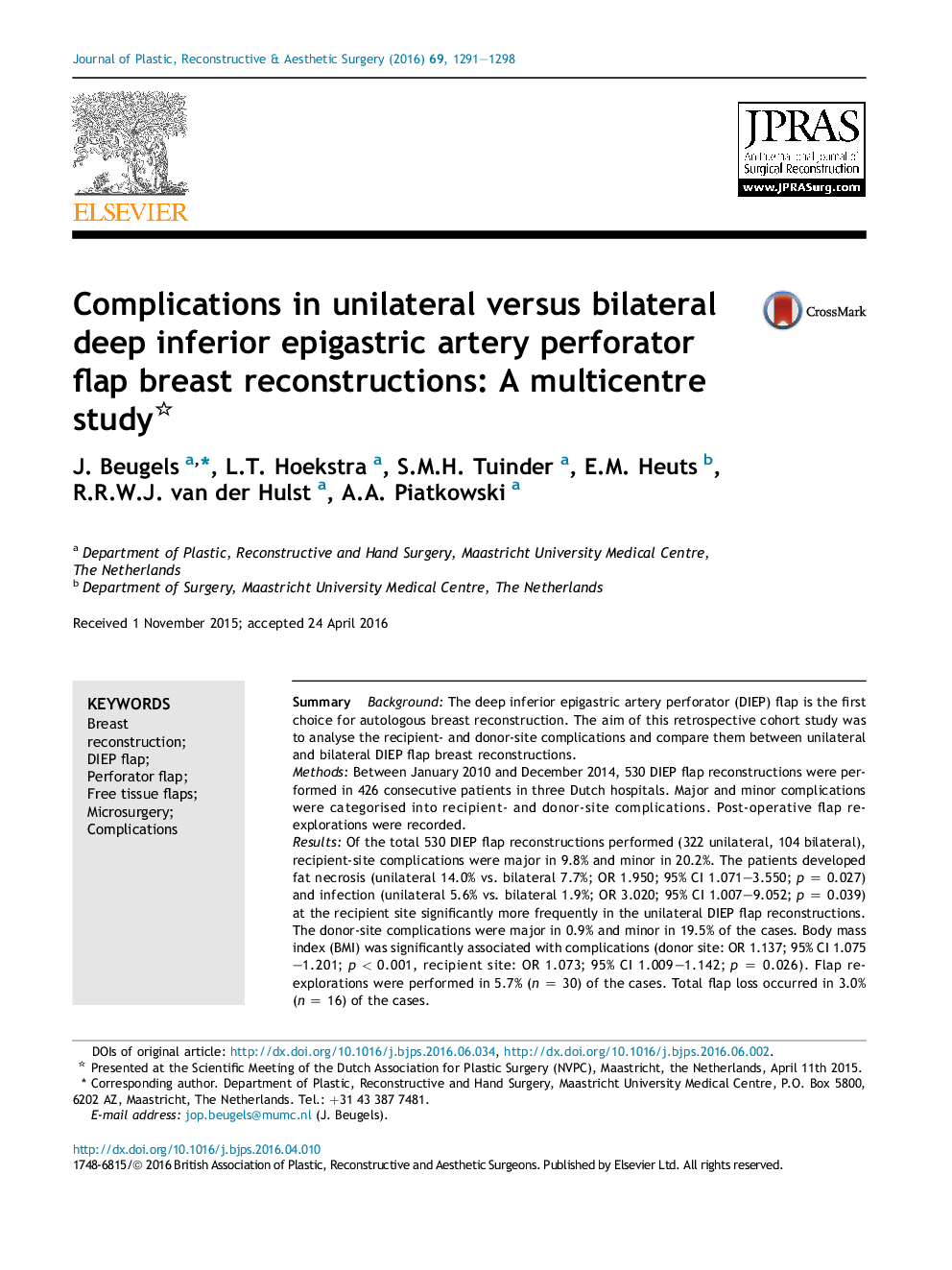| Article ID | Journal | Published Year | Pages | File Type |
|---|---|---|---|---|
| 4117128 | Journal of Plastic, Reconstructive & Aesthetic Surgery | 2016 | 8 Pages |
SummaryBackgroundThe deep inferior epigastric artery perforator (DIEP) flap is the first choice for autologous breast reconstruction. The aim of this retrospective cohort study was to analyse the recipient- and donor-site complications and compare them between unilateral and bilateral DIEP flap breast reconstructions.MethodsBetween January 2010 and December 2014, 530 DIEP flap reconstructions were performed in 426 consecutive patients in three Dutch hospitals. Major and minor complications were categorised into recipient- and donor-site complications. Post-operative flap re-explorations were recorded.ResultsOf the total 530 DIEP flap reconstructions performed (322 unilateral, 104 bilateral), recipient-site complications were major in 9.8% and minor in 20.2%. The patients developed fat necrosis (unilateral 14.0% vs. bilateral 7.7%; OR 1.950; 95% CI 1.071–3.550; p = 0.027) and infection (unilateral 5.6% vs. bilateral 1.9%; OR 3.020; 95% CI 1.007–9.052; p = 0.039) at the recipient site significantly more frequently in the unilateral DIEP flap reconstructions. The donor-site complications were major in 0.9% and minor in 19.5% of the cases. Body mass index (BMI) was significantly associated with complications (donor site: OR 1.137; 95% CI 1.075–1.201; p < 0.001, recipient site: OR 1.073; 95% CI 1.009–1.142; p = 0.026). Flap re-explorations were performed in 5.7% (n = 30) of the cases. Total flap loss occurred in 3.0% (n = 16) of the cases.ConclusionsBilateral DIEP flap breast reconstructions can be performed with the same percentage of complications and re-explorations as unilateral reconstructions and even result in less fat necrosis and infection at the recipient site. Higher BMIs are significantly associated with recipient- and donor-site complications.
